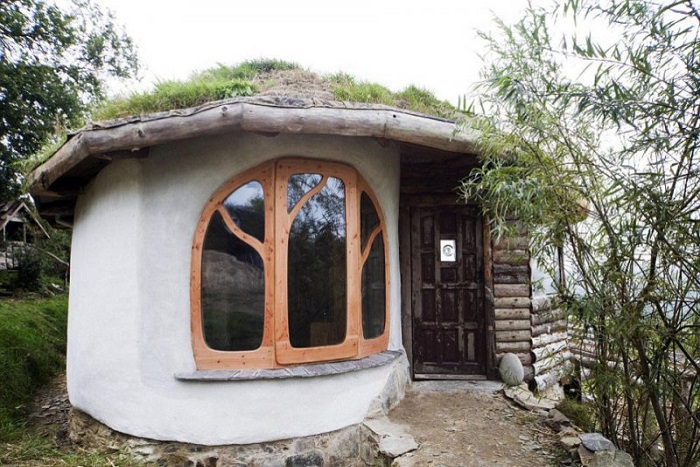2018-12-29 13:18:58 3005

10 amazing dwellings of different peoples top 10..
Man has always sought warmth and comfort, inner peace. Even the most avid adventurers, who are always attracted by horizons, sooner or later return to the hearth. People of different nationalities and faiths have always created a home for themselves taking into account the beauty and convenience that they could imagine being in certain natural conditions. The amazing shapes of the buildings, the materials from which the dwelling was built and the interior decoration can tell a lot about its owners.
1. The wigwam. This name is familiar to every fan of Indian films. The hut is conical or pyramidal in shape, the basis of which is thin tree trunks. It is covered with the bark of an elm or birch, and sometimes with reeds. This is the home of a North American Indian. The dwelling was not intended to be moved, however, if necessary, it was easily assembled and then erected in a new place.
2. The needle. A truly amazing invention. It was invented by the Eskimos of Alaska. You know, in Alaska, not everything is good with building materials, but people have always used what is at hand and in large quantities. And in Alaska, ice is always at hand. That's why the Eskimos began to build themselves domed houses from ice slabs. Inside, everything was covered with skins for warmth. The residents of Finland, a northern country where there is also plenty of snow, liked this idea very much. There are restaurants built on the principle of an igloo and even competitions are held, the participants of which collect an igloo from ice blocks for speed.
3. Minka. This is the dwelling of Japanese peasants. High thatched roofs, walls of bamboo, grass and straw mixed with clay. Since many Japanese of simple origin were engaged in the cultivation of silkworms, when building a dwelling, it was taken into account that the main place in the room was allocated for silkworm weaving. There were no ceilings inside the house, the walls were replaced by sliding paper panels that allowed changing the shape of the rooms.
4. Pagliaso. These dwellings used to belong to Spanish peasants. Now people practically do not live in such houses, but they have remained in the form of historical monuments in the Spanish village of Piornedo. The buildings looked uncomfortable, almost rooted into the ground, as if they consisted of one roof. There were no windows and, as a rule, the dwelling was divided into two rooms: people lived in one, cattle in the other.
5. Rondavel. The traditional roundhouse of the peoples of South Africa. The building material is the cheapest: sand, manure, grass, a conical roof is made of reeds. In order to preserve some ethnic tradition, this form of buildings is used in the construction of hotels in South Africa. Only, of course, they do without manure during construction.
6. Saklya. The stone dwelling of the Caucasian mountaineers. It is built of clay and ceramic bricks, the roof is flat, narrow windows, similar to loopholes. It was both a dwelling and a kind of fortress. It could be multi-storey, or it could be built of clay and have no windows. An earthen floor and a hearth in the middle – that's the modest decoration of such a house.
7. Trullo. An Italian dwelling, ranked in our time as a monument. The house is notable for the fact that it was built using the "dry masonry" method, that is, simply from stones. This was not done by chance. Such a construction was not very reliable. If one stone was pulled out, it could completely fall apart. And all because in certain areas houses were built illegally and with any claims from the authorities, they could easily be liquidated.
8. Tipi. Dwellings of native Americans. This structure was portable and was built from poles, which were covered with deer skins on top. In the center there was a hearth, around which sleeping places were concentrated. A hole for smoke was necessarily left in the roof. It's hard to believe, but even now people who support the traditions of the indigenous population of America still live in such huts.
9. Yurt. A dwelling for nomads – Mongols, Kazakhs, Kirghiz. How is it convenient in the conditions of steppes and deserts? To assemble and disassemble such a house is a matter of a couple of hours. The base is built of poles, covered with mats on top. Shepherds still use such buildings. Probably, many years of experience suggests that they are not looking for good from the good.
10. The hut. Log house, built by Slavs. The hut was assembled from logs (the so-called log house), the logs were laid according to a certain principle. An oven was laid out in the house. The hut was heated in a black way. The pipe on the roof began to be installed later, and then the smoke was removed from the house through it. Log cabins could be disassembled, sold and laid out a second time, erecting a new house from an old log house. This method is still used by summer residents.
No matter how ridiculous the structure may seem, this is a house for the one who built it. People lived in these strange buildings: they loved, created a family, suffered and died. Life, history with all its peculiarities, events and miracles flowed through the houses of these people.
multiurok.ru
